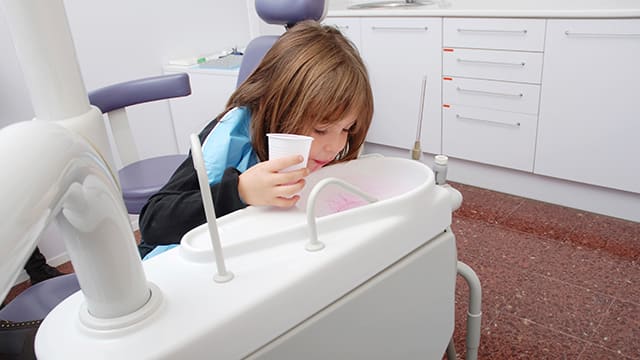-
-

CAVITIES
Can You Heal A Cavity At Home?You feel a sharp pain when you bite down or try to eat. You think it's a cavity, but you're not 100 percent sure...

BAD BREATH
How To Cure Bad BreathMore commonly known as bad breath, halitosis is an embarrassing hygiene issue that nobody wants, but some of us get every now and then...
-
Science & Innovation
- Colgate® | Toothpaste, Toothbrushes & Oral Care Resources
- Oral Health
- Do Baby Growth Spurts Affect the Development of Teeth?


Baby growth spurts are short periods, usually lasting two to seven days, when a baby quickly gains weight and height. These occurrences aren't directly related to the development of a baby's teeth, but if your child has a growth spurt while teething at the same time, you're likely to have a fussy baby on your hands.
Side Effects of Growth Spurts
A growth spurt can happen at any age, but it most commonly occurs when a baby is two to three weeks old, around six weeks old, and again around three months old, according to the American Academy of Pediatrics (AAP). During a growth spurt, it's normal for babies to want to nurse all the time. If you are breastfeeding, the AAP recommends that you try to avoid serving your baby any other liquids or foods for about the first six months, as breast milk is the only food your baby needs at that time.
Baby growth spurts also commonly occur at six and nine months of age, when you can start feeding your baby other liquids and foods. In addition to hunger, fussiness and night waking are other common signs of a growth spurt in your baby.
Growth Spurt or Baby Teeth?
Fussiness and sleeplessness are also common signs of teething, but unlike during a growth spurt, babies may lose their appetite when teething, according to the American Dental Association (ADA) Mouth Healthy site. Children usually develop their first teeth between the age of four and seven months, with the two bottom middle teeth (central incisors) generally appearing between six and 10 months. The upper central incisors usually appear between eight and 12 months.
Between the ages of nine and 16 months, according to the ADA, the teeth to the right and left of the central incisors (also known as lateral incisors) develop, usually starting with the top teeth. The first molars usually appear between 13 and 19 months, with the teeth between the lateral incisors and first molar (called canines or cuspids) coming in between 16 and 23 months. The last teeth to come in are the lower and upper second molars, between 23 and 33 months.
Calming a Fussy Baby
Based on the common times for growth spurts and teething, it's possible for a baby between six and 12 months to go through both concurrently. One way to help a teething baby is providing something firm to chew on, such as a clean teething ring. But calming a fussy baby having this experience can be a challenge, especially if he or she is weathering a growth spurt at the same time.
For fussiness, try distracting the baby with play. Infants are often soothed when kept in motion, such as in a rocking chair, a baby swing or even a car or stroller. Background noise, such as a fan, white noise machine or music soothes some children as well. For more suggestions, talk to other parents who have dealt with growth spurts and teething. Even if you're feeling frazzled, present a calm demeanour to your baby, and remember that this situation is temporary.
Caring for Baby Teeth
Both the ADA and AAP recommend that you start cleaning your baby's teeth as soon as they appear. Brush gently with just a smear of fluoride toothpaste – an amount the size of a grain of rice – until your child reaches the age of three. You can also use a toothbrush especially made for babies.
Related Products

Helping dental professionals
More professionals across the world trust Colgate. Find resources, products, and information to give your patients a healthier future











